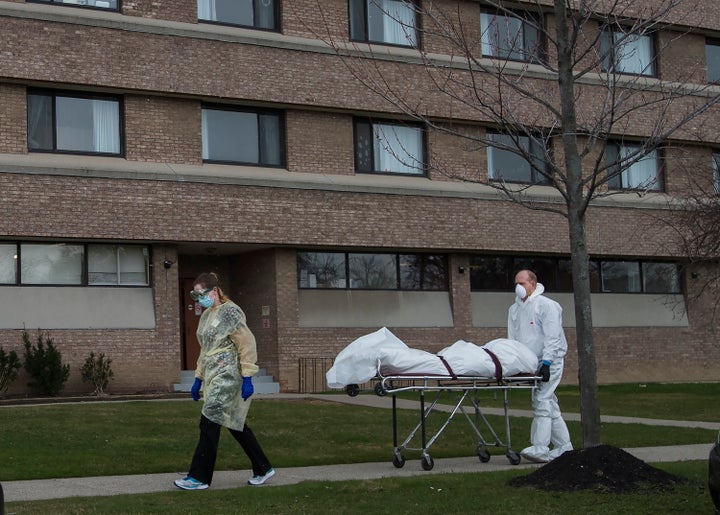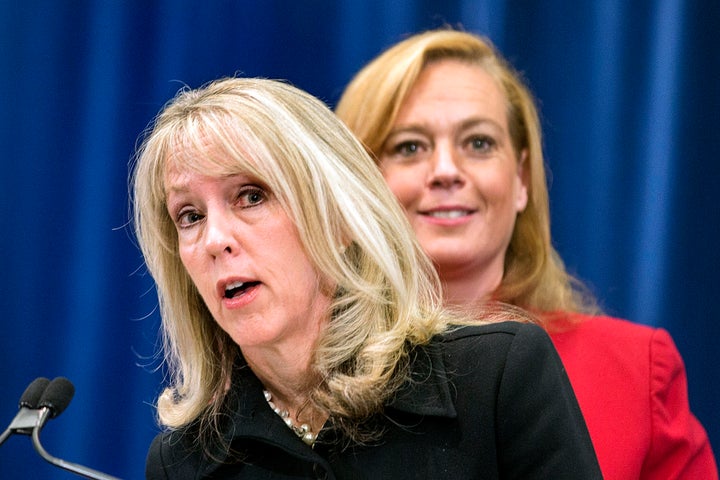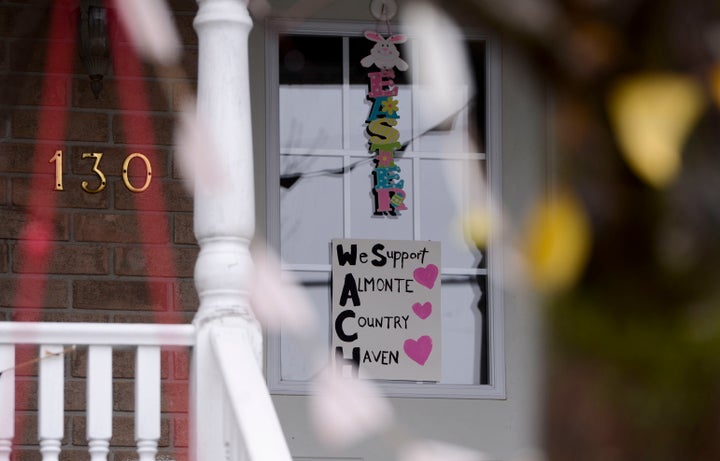Personal support workers (PSW) “do everything from changing colostomy bags to holding your hand while you’re dying,” she told HuffPost Canada.
The COVID-19 pandemic has added even grimmer tasks to their to-do lists.
“We had two PSWs the other day that had to put a body in a bag because the coroners won’t come into the homes right now. And I’m thinking, ‘For that money, no wonder people are running.’”

Hasler has worked as a PSW at a Dundas, Ont. long-term care home for 33 years. She says the job has become “brutal” in the past five to ten years. Heavy workloads have become even more burdensome as homes struggle to recruit new workers. And patients with more complex needs require more care and sometimes become aggressive.
She said PSWs today earn a starting wage of about $18 an hour.
“For the pay grade, it’s pretty sad,” Hasler said. “If you can work somewhere else for $15, why would you go and put a body in a bag for $18?”
UPDATE - April 25, 2020 2:40 p.m. ET: The Ontario government announced it will increase wages for workers on the front lines of the fight against COVID-19, including those in long-term care homes. Workers will get an extra $4 per hour plus a monthly bonus of $250 if they work more than 100 hours per month.
The COVID-19 pandemic has brought Ontario’s long-term care sector to the forefront. Officials said Monday the disease has taken on two distinct paths in the province. In the general community, the pandemic has peaked and is under control. But it continues to spread through long-term care homes with tragic results. And almost all the homes were short-staffed to begin with.
“If you can work somewhere else for $15, why would you go and put a body in a bag for $18?”
- Cindy Hasler
A total of 573 people have died of COVID-19 in long-term care homes as of Friday morning, representing about 75 per cent of Ontario’s 763 deaths.
Ontario Premier Doug Ford called in the military to help with the workload. And while the province has forbidden workers from working in more than one home — so that they’re less likely to bring the virus into their workplace — that policy does not apply to temporary workers employed through staffing agencies.
The minister of long-term care said homes need these temporary workers to cover for workers who need to self isolate or choose between part-time jobs in two homes.
“We’ve been extremely concerned about staffing,” Minister Merrilee Fullerton told reporters Monday.
Inadequate staffing has been a chronic problem in Ontario’s long-term care homes, the CEO of the Ontario Long-Term Care Association Donna Duncan told HuffPost.
“We had a critical shortage to begin with.”

Ninety per cent of the homes Duncan represents have a hard time recruiting staff, she said.
She said she hopes the attention COVID-19 has brought to the sector will encourage the government to fix some long-standing issues.
The majority of long-term care staff are employed part time, Duncan said, because funding is unpredictable and homes need the freedom to change workers’ hours if their budget changes.
Stable, adequate funding would make the difference, she said.
‘Culture of fear’
Excessive restrictions on what staff are allowed to do and “punitive” inspections of everything from the way medication is administered to how meals are served make workers’ lives difficult, she added.
A 2019 inspection report provided to HuffPost by Duncan said that a home had failed to comply with a regulation that requires “planned” menu items be available at each meal. The home had served pineapple and green jello for dessert instead of rhubarb and banana loaf. It was issued a “written notification” of its failure to comply with the rules.
“It’s created this culture of fear, quite honestly, and stigmatized the environment so people didn’t necessarily want to come work in it,” Duncan said.
Hasler said that when she serves lunch to 25 patients, the ministry expects each course to be served separately.
“So you serve everyone soups and then you’re supposed to wait until every single person’s done their soup and then you serve the next course ... It’s just not feasible when you have a patient that takes half an hour to eat,” she said.
“The inspections are brutal but I still feel they need to take place … I would want my loved one monitored.”
Hasler said what PSWs need is higher pay, more full-time opportunities and protection from aggressive patients.
“The word gets spread out there: ‘You don’t want to go do that kind of career. You’ll get beaten up.’”
- Cindy Hasler
She recalled an incident a few years ago when she leaned a patient forward to put his arm in a sling.
“He bit me in the arm so hard I had the bruise for two weeks,” she said.
“This is the reason why people are getting stressed out and burnt out … The word gets spread out there: ‘You don’t want to go do that kind of career. You’ll get beaten up.’”
The COVID-19 crisis could strain long-term care workers even more. Duncan said that in the “worst case scenario,” half of the sector’s 80,000 employees could be off work.
“The one thing we need most of all is people.”

A spokesperson for Minister Fullerton noted the government announced a study of the staffing problems in February and planned to unveil a strategy to fix the “severe” issues by the end of 2020.
“We were well on our way to understanding what needs to be put in place in terms of training, recruitment, and other key elements to fix this critical shortage when COVID-19 hit,” Gillian Sloggett told HuffPost by email.
“While this terrible virus has delayed our efforts, we are looking two steps ahead and are prepared to resume them with full force when Ontario comes out the other side of COVID-19.”

Hasler said the jobs simply need to be made more attractive.
“Even through hard times, I still enjoy my job,” she said. “I just don’t enjoy it when we’re working short [staffed] five out of seven days.”
Duncan said the COVID-19 crisis has already helped the public understand more about people who live in long-term care and the workers who tend to them.
She said community members have been dropping off meals for the workers and that at one home in Lanark, Ont., people put bird feeders outside the windows so that residents could watch the birds while they’re isolated from family.
“We’re not so lonely anymore,” Duncan said. “Hopefully, this will deal with some of the stigma and help people realize that these [workers] are heroes.”